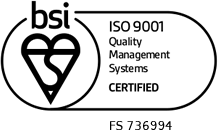This is an enormous field and one that is dominated by the physics, chemistry, engineering, and systems design of complex materials. Current research trends are concerned with increasing the number/density of switching elements on electronic chips (Moore’s Law), reducing power requirements, increasing processor speeds, and increasing functionality. Many different technologies and related materials are being developed in these spaces. These include graphene and related 2D (topological) systems, spintronics (utilising novel quantum materials), low power devices including piezotronics, high power low loss and high-temperature materials such as SiC, GaN and others for telecoms applications, low power, wearable flexible electronics based on all sorts of polymer semiconductors, and many more.
One of the long term visions is to create a new form of high-speed computer-based on Quantum technologies. Quantum computers use the principles of quantum superposition, entanglement and interference in order to solve particular classes of problems at an appreciable speed/time advantage over conventional (Von Neumann) computers. At the time of writing, only relatively small scale quantum computers have been built, providing a few tens or hundreds of qubits (quantum bits) to work with; in order to to be used more widely, and in order to implement the error correction codes that our applications rely on, quantum computers will ultimately need to provide millions or trillions of qubits. In addition, most mainstream approaches to quantum computing require that the materials used be held at very low temperatures, which in turn requires significant energy and infrastructure. Thus this field is still in its infancy, although it is progressing rapidly.
Piezoelectric Applications in Electronics, Telecommunications, Computing
The use of Piezoelectric materials and devices is well established in the Information & Communication Technology (ICT) industry and the consumer electronics industry.
Mobile communication, radio and television, the Internet and local area networks, computers, electronics and optoelectronics – all make use of piezoelectric components and indeed most would not even be possible without them. Compact, hand-held consumer electronic devices in particular, present a rapidly growing, high volume applications market for Piezo technology.
Piezomotors and piezoelectric actuators, are growing ever popular for many applications, driven by requirements for low power consumption, high speed, fine precision, high reliability and low cost. For example miniature piezo-motors, (usually based on the material PZT), are frequently used in the auto-focussing, image stabilisation and zoom features of many digital cameras, including importantly, those found embedded in mobile phones. Piezo speaker elements and audible warning devices are familiar to most, whilst haptic technology (positive tactile feedback) in touch screens is a newer innovation.
Piezoelectric transformers have undergone significant development over the past few decades and are frequently used in place of ferromagnetic transformers, and as galvanic isolators in a great number of different applications. For example, one common application is in flat screen technology. Here, high-voltage piezoelectric transformers have been adopted to power the cold cathode fluorescent lamps (CCFLs) used to backlight the displays of flat screen TVs, laptops, tablets and other flat-screen equipment. Thanks to the very unique properties of piezoelectric materials, it has been possible to minimize the size and increase the energy density of such devices, allowing for low profile highly integrated transformation of voltage. Though this application for piezo transformers was significant in the past decades it has fallen out of favour with the advent of current TFT display technologies.
Piezoelectric Surface Acoustic Wave (SAW) filters and Bulk Acoustic Wave (BAW) resonators and filters are another high volume application area. SAW devices are typically operated in the mid-to-one-GHz frequency range whilst BAW devices can operate at higher frequencies (around 10 GHz). both SAW and BAW devices are particularly useful in current and next generation mobile/wireless communications devices, not only in phones, but also in base stations, repeaters, switches and multiplexers.
Piezoelectric clock frequency generators have long been used in microprocessor based equipment; originally quartz based components were used, but latterly PZT-based components are now used instead, thanks to recent advances in the manufacturing processes – higher stability and better repeatability.
Future applications of piezoelectrics are looking to integrate them into high speed information storage devices, as high density energy storage systems as alternative to battery technology and even as small scale energy harvesters that for example, might continuously recharge your mobile device so that you may never have to plug it into a wall socket again.



